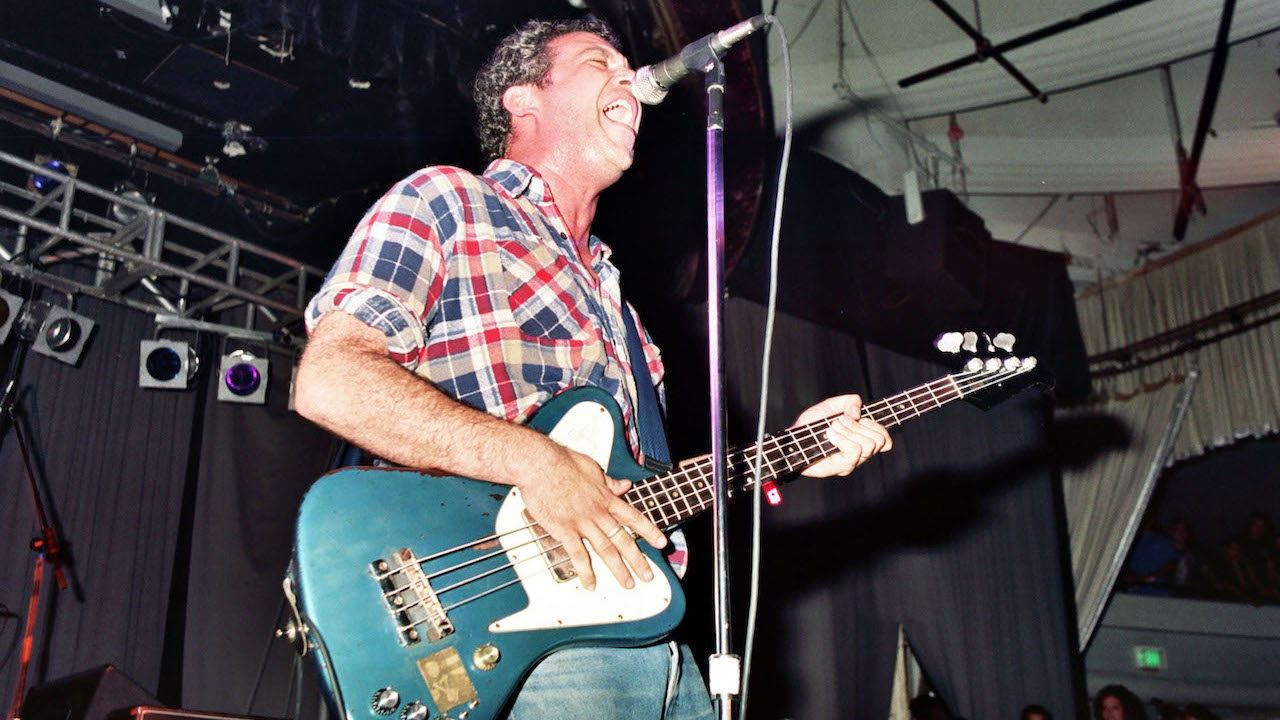
Talking to legendary punk bassist Mike Watt is a unique experience. With a combination of middle-aged wisdom and the excitability of a teenager, he punctuates his road stories and sage observations with belly laughs and mile-a-minute rants on nothing in particular. “Back in the '60s a lot of people thought of the bass as a kind of toy, almost like a kazoo,” Watt told BP. “We had to fight and earn the bass some respect. On the other hand, there's something cool about people not really knowing what we do: we're left free to define ourselves.”
Watt grew out of Southern California's late-'70s punk-rock scene to co-found the Minutemen. The seminal post-punk band pounded out an extraordinary number of terse, frantic tunes with heavy political themes laced with elements of jazz, and funk. “Back then, you never knew what the next band was going to sound like. Almost anything went, and it wasn’t about haircuts or guitar styles. I miss a lot of the chaos of the old days.”
Watt has always been at his best when pushing the bass guitar to the forefront – much like one of his early heroes Jack Bruce of Cream. “Bass physics are trippy. If you stand too close to your amp, you're never really sure what it sounds like, ‘cause you throw your frequencies way out there, but bass players seem to like that feeling of the sound pushing against their legs; there’s something about it that gives you confidence. On the other hand, you don't know if the audience is hearing nothing but foghorn. That’s why I always hire bass players as sound men – because I’m paranoid!”
In 1995 Watt put together his debut solo album. An ambitious 17-song project, with nearly 50 alternative-music guests, Ball-Hog or Tugboat? included Flea, Pearl Jam's Eddie Vedder, and Nirvana's Krist Novoselic and Dave Grohl.
To record Ball-Hog, Watt used an old Eden VT- 40 head; since early Edens tend to overheat when pushed, he installed two fans on his, designed to keep running after the main power is shut off. He also used a dbx 4-band parametric EQ. “I need a little midrange for definition, but I like to scoop out the low mids. You've got to get rid of that stuff – it’ll bogart the whole band.”
When he hit the road, Watt brought along a Stewart PA-1000 power amp and used the VT-40 as a preamp. On a mid-tour visit to the Eden factory in Minnesota, he picked up a WT-800 head to replace the VT- 40, together with 4x10 and 2x10 XLT speaker cabinets.
“I used to use 15-inch speakers, but I destroyed eight of them on tour - the solder connecting the cone wires to the terminals would melt. I think the 15s couldn't handle the attack; with the Edens, the box acts like a 15, but you get the attack of the 10s. Plus, old man punk is small shit with wheels – I load my own stuff, and I just can't handle those big boxes anymore.”
For years, Watt was rarely seen onstage without his trademark '68 Telecaster Bass, before it came out of service in the mid-90s. In the Tele's place, he began throttling a '67 non-reverse Gibson Thunderbird, “I bought it because the case said Dee Dee Ramone on it, but man – it has that Live at Leeds sound.”
Watt added a Bartolini TBX pickup, tweaking the electronics by changing capacitors. “To me, the whole character of a bass is it’s voice. It's a delicate thing to get that low, nasal sound without being a bogart.”
Another characteristic of the Gibson is the word ‘thunderbroom’ carved into the back of the mahogany body. “I was playing a gig in Phoenix, and some kid showed up with a Dremel Moto-Tool. He carved it righteous, a half-inch deep!”
Watt underwent surgery in 2000 and, following his recovery, switched to short-scale basses, including a Gibson EB-3. He has also experimented with a Guild Ashbory, an instrument with a 22-inch scale and silicone-rubber strings that was designed to mimic the sound of an upright. These days, he plays his Reverend signature Wattplower bass, which he co-designed with Ken Haas and Joe Naylor.
Watt has never been very keen on effects. “I think ‘effects’ come from the way you play. By the bridge, by the neck, close to the body, far from the body…I always thought there was enough variation there. I did try this green envelope filter – a DOD, I think – on the tune Tell 'Em, Boy! It's great because it interprets how hard or soft you play, instead of hiding your dynamics. I had a couple of Mu-Trons, but I used this green one because it's more extreme-sounding. I wanted to go over the top with it.”







